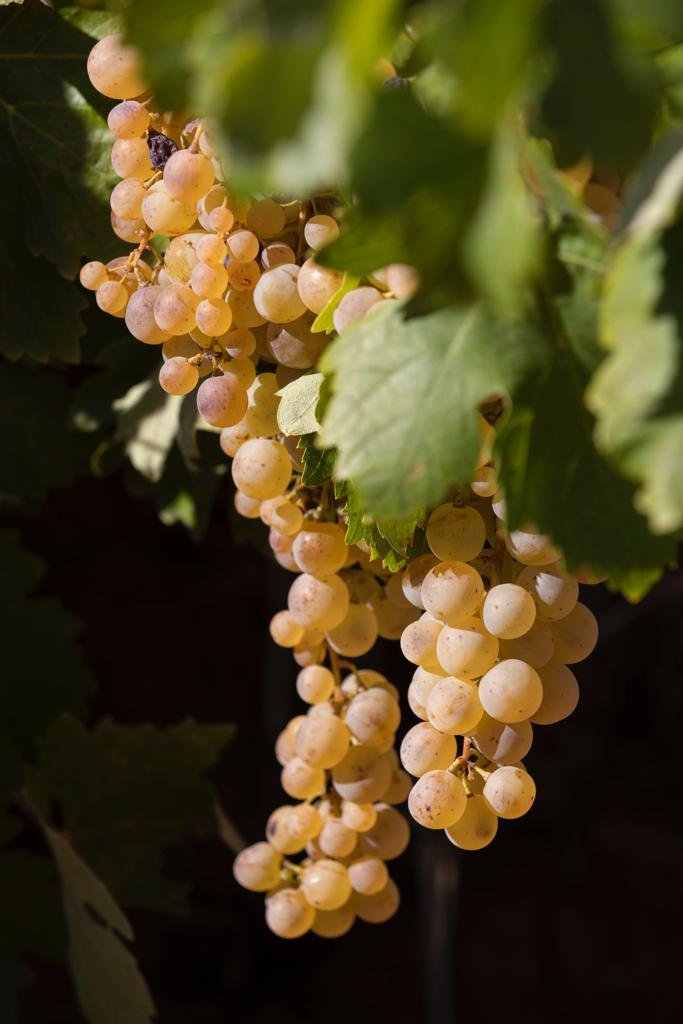La Maldición 2019, Bodegas Cinco Leguas
Marc Isart with his father. Photo credit: Abel Valdenebro.
La Maldición 2019 - Bodegas Cinco Leguas
Region – DO Vinos de Madrid
Varieties – 100% Malvar
ABV - 12%
€12.40 - LAVINIA
You can put lipstick on a pig, the old adage goes, but it's still a pig.
It's a phrase no doubt that's been uttered by many Spanish winemakers over the years when discussing some of the country's more maligned varieties. One of those, Airen, is Spain’s most planted grape. A white workhorse variety that’s still invariably used in brandy production and that practically no one buys with the expectation of quality. Let’s take Bobal, Spain’s second most planted red variety. For years the “darling” of central Spain’s prodigious bulk wine export industry, even its better examples as a table wine were politely described as “a tad rustic”.
Times, however, are a changing. Anyone who’s tasted Bodegas Verum’s Las Tinadas will now attest that, in the right hands, Airen can be made into something far above the level we’d come to detest. Even esteemed wine critic Tim Atkin couldn’t quite believe his taste buds when trying it for the first time.
Enter stage left Toni Sarrion and, more recently, Bruno Murciano. Sarrion’s work in the vineyard has also changed the way we think about Bobal. His wines at Bodegas Mustiguillo, such as Quincha Corral & Finca Terrerazo, have us now talking of Bobal in almost reverential tones. Murciano, with his sublime Cambio de Tercio, which had this SWC correspondent and Adrian McManus flummoxed when tasted blind recently, has done much to change perceptions of Bobal amongst UK wine drinkers with an excellent range of wines.
Photo Credit: Abel Valdenebro
All this brings me to another woebegotten variety: Madrid's very own white Malvar. It even has bad (mal) in the name! Prevalent in the east of the region (Albillo Real being favoured to the west) it has no history of fine wine making. “Insulso” (one of my favourite Spanish adjectives) fits perfectly. It's a variety that invariably makes bland, dreary wines. So when I was told of an interesting Malvar fairly recently coming to market, I greeted the news with a mixture of indolence and scorn. Pah! Impossible! No such thing exists. However, when I was told the wine was being made by Marc Isart my reaction changed. Isart, is one of the Madrid’s finest winemakers. Anyone who's enjoyed the wines of Comando G & Bodegas Bernabeleva will have already tasted his work.
Photo Credit: Abel Valdenebro
The wine in question, La Maldición, is the product of Isart’s most personal project so far. Cinco Leguas, based in Chinchón (a town better known for anís liquor production than wine), is a small bodega working predominantly with Tempranillo & Malvar. Madrid’s eastern wine producing zone does not have the caché of its western cousin where the Garnacha de Gredos is sweeping all before it. Putting your wine on the map in the arid vegas (plains) on the road to Valencia is no easy task.
Anyway, curiosity got the better of me one day last month so I went in pursuit of La Maldición. Local retailers Lavinia obliged and I went home with the 2019 añada. The bottle suitably chilled I uncorked it. Immediately I realised I was dealing with no ordinary Malvar. The colour, a burnt amber, said skin contact. The nose was hedonistic - tangerines, ginger and a hint of smoke. Like nothing I’d ever seen from a Malvar before. The palate may not keep pace with the complexity of the nose but it certainly has body from the time spent in bota & oak. Maceration lasts for 50 days and Isart feels it benefits what is an aromatically very neutral variety. The finish is tart but pleasant. The tannins don’t overpower the wine and nothing feels out of kilter.
Like many skin contact wines I’ve tried it matched extremely well with sushi, but unlike several others it didn’t grate once the food was finished. Since this edition the wine has been given a more modern label, but I believe the methodology is largely unchanged. Those in the know say it’s improving every year as Isart acquaints himself better with the variety.
Needless to say it’s made me reconsider what I thought I knew about Malvar and once again proves that even the dullest grapes can be transformed in the hands of a master of his craft. What awaits us with other denigrated grapes remains to be seen, but I for one will be keeping an open mind.



